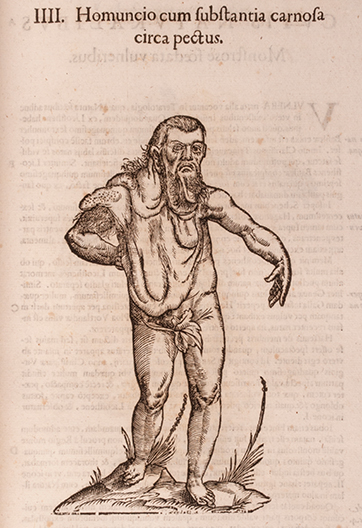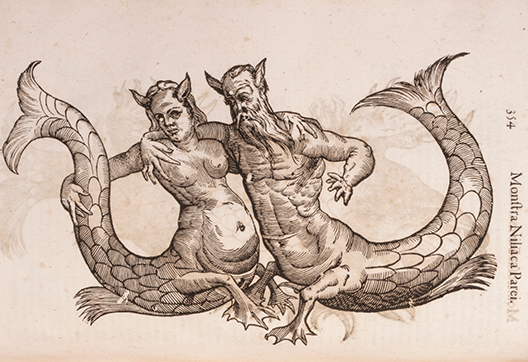By Keegan Trofatter
The Italian Renaissance naturalist Ulisse Aldrovandi (1522-1605) was known for his systematic observations of animals, plants, and minerals. During his tenure as a professor of logic and philosophy at the University of Bologna, he was arrested for heresy, appointed by Pope Gregory XIII as inspector of drugs and pharmacies, and authored several published encyclopedias.
The rest of his written work remained unpublished until after his death. One of these volumes, the Monstrorum Historia (History of Monsters), published in 1642, was recently acquired as part of the History of Medicine Collections in the Rubenstein Library. Depicting legendary creatures, unusual congenital abnormalities, and lots of hybrid combinations, it would be easy to confuse it as a work of mythological, rather than medical, history.
The Monstrorum is part of a larger, thirteen-volume encyclopedia compiled by Aldrovandi’s students and protégés, meant to catalog the world in its entirety. Today, the work stands as an important piece of medical history as it includes some of the earliest documentation of rare medical conditions. While some parts of the book are more akin to fairytale than to fact, Aldrovandi assiduously cataloged and preserved the rare, marvelous, and imaginative prodigies of his time.
Can you spot the scientific from the supernatural? Check out some of Aldrovandi’s most marvelous of monsters.
Keegan Trofatter (T’19) is an English major and student worker in the Library Development and Communications department.














